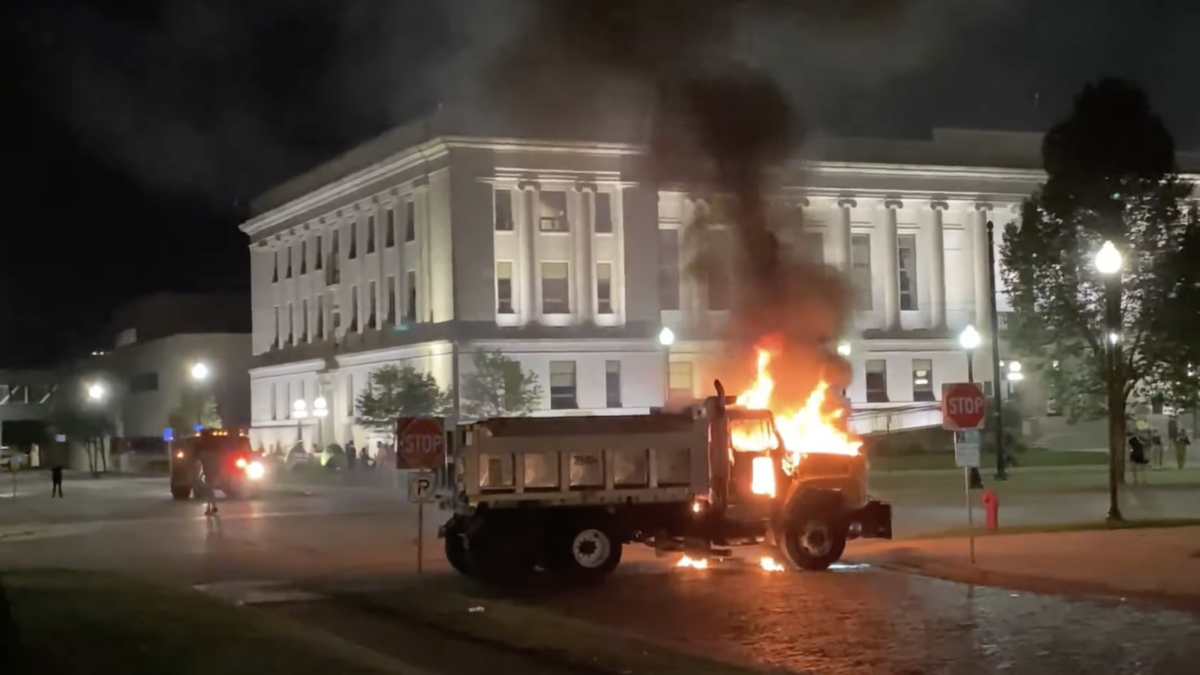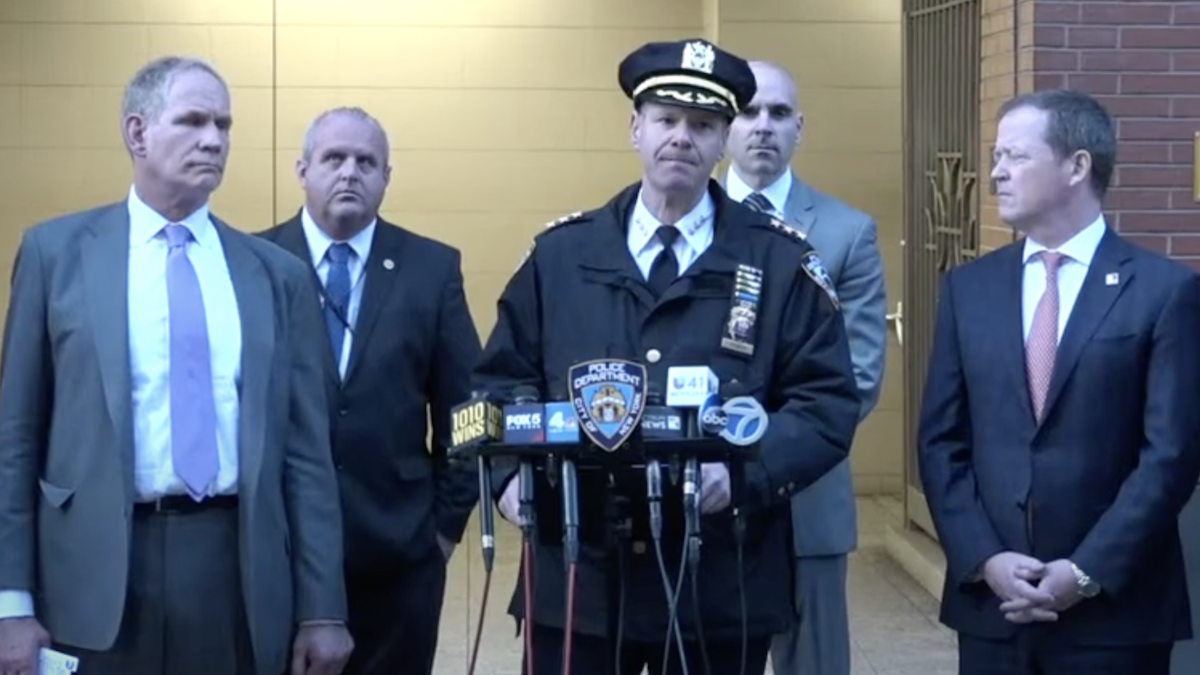MADISON — The first night of the Kenosha riots, two years ago this week, was bad. But things were about to get much worse.
A lot of Kenosha residents and business owners understood that. It’s a shame Gov. Tony Evers didn’t. Instead, the governor was too busy jumping to conclusions, alongside many in the corporate media, over the police shooting of Jacob Blake.
The 29-year-old black man, who was wanted on a warrant for domestic abuse and sexual assault charges at the time he was involved in a domestic disturbance, repeatedly resisted arrest despite being tased. An independent investigation, which cleared officers of any wrongdoing in the incident, also noted Blake had a knife.
But that information was in the future. On Aug. 23, 2020, speculation and rage were all the rage, and Evers contributed.
In the summer of George Floyd and other high-profile incidents of African-Americans dying at the hands of police, Evers lumped in the Blake shooting and joined a chorus of radical voices in vilifying law enforcement. As the protesters gathered and the anger mounted, Evers issued an incendiary statement. He acknowledged he didn’t have all the facts. Nonetheless, the leftist governor was willing to incriminate the officers involved in the name of his far-left politics.
“While we do not have all of the details yet, what we know for certain is that [Blake] is not the first Black man or person to have been shot or injured or mercilessly killed at the hands of individuals in law enforcement in our state or our country,” Evers said.
And then … all hell broke loose.
“Evers’ statement and his public comments in the days that followed were so offensive and so dangerous that the heads of the Wisconsin Sheriffs’ Associations and Police Chiefs’ Association sent a letter to Evers,” U.S. Rep. Bryan Steil, who represents Kenosha in Wisconsin’s 1st Congressional District, wrote in a column last year as the governor attempted to rewrite history.
Hours after Blake was transported to the hospital, a growing protest turned violent. Rioters raged through Kenosha’s downtown, smashing up or setting fire to government buildings and vehicles, businesses, schools, a museum, and a church.
Calm Before the Second Storm
Scott Carpenter remembers the day after the Blake shooting. He was making deliveries for his family-owned B&L Office Furniture store, a business in the 1100 block of 60th Street in Kenosha’s old Uptown District that his dad started more than 40 years ago.
Carpenter saw the boarded-up windows and doors of the downtown buildings. Many feared the rioters would be back in greater numbers as night fell. City officials were passing out fliers warning businesses to close at 3 p.m. and for everyone to stay off the streets. It was like a ghost town.
Around 4:30 p.m., Carpenter turned down Sixth Avenue. A march had already started up.
“It was really eerie. It was so quiet, like the calm before the storm. You could hear a pin drop, but you could feel it in the air,” the businessman recalled.
Carpenter drove to his home in Pleasant Prairie, about 10 minutes from the store. He walked the dogs. He waited. He worried.
Helpless Feeling
As the evening progressed, larger crowds began to form. The protests were captured live on Facebook by enterprising people and their smartphone cameras.
Carpenter, his family, and many others watched the demonstration turn into a full-scale riot. They watched as the looters and rioters smashed and burned their way into Uptown, to B&L Office Furniture.
“I could see 60th Street, I could see our building in the background and this flood of people coming down the street like school had just let out,” Carpenter said. He saw a light coming from the store. He wondered if it was the emergency exit light. His sister, watching the same live coverage, set him straight. It was a fire.
“I thought, you’ve got to be kidding me. I thought maybe the fire department would get to it.”
Firefighters didn’t get to that fire or many others set that night. There were so many fires burning — little ones and big ones — that firefighters were overmatched. Even when they tried to respond, the mass of people blocked them from getting through. It was the same story with ambulances called to the scene to respond to the injured — like Robert Cobb. The 70-year-old good Samaritan was brutally assaulted while trying to defend the century-old Danish Brotherhood from looters and arsonists. Despite his efforts, the building burned to the ground.
It was a helpless feeling. More so, Carpenter said, because he watched it all go down in real-time.
“There was nothing you could do,” he said. “The guy who was doing the recording walked down over by the probation/parole office that was in flames. By that time (our building) was on serious fire. I’m thinking, ‘There’s an extinguisher right there! Do something!’ We could only just sit there and watch it.”
‘It Didn’t Have to Be This Way’
But more devastating than that feeling of helplessness is the belief by Carpenter and so many business owners and residents of Kenosha that all of the damage and pain, the wanton destruction, could have been prevented. It didn’t have to happen the way it did.
As has been well documented, Evers was slow to send enough Wisconsin Army National Guard members to protect a city under siege, initially denying offers of federal law enforcement assistance from then-President Donald Trump. Embattled and overmatched local law enforcement agents and government leaders begged Evers to do more to restore order. Finally, after a violent third night of riots in which Kyle Rittenhouse, a 17-year-old from nearby Antioch, Ill., shot three rioters, Evers called up enough troops to help law enforcement regain control.
Evers and his team have insisted they did everything in their power to protect Kenosha. The record shows otherwise. He and his lieutenant governor, Mandela Barnes, placated the radical left and vilified police. And Evers, the commander in chief of Wisconsin’s National Guard, was loath to send in a strong show of force to check the hundreds of criminals — many who didn’t live in Kenosha or Wisconsin for that matter.
“If Kenosha was telling people to close their businesses early, they obviously had the foresight to do that,” Carpenter said. “Why didn’t he [Evers] have the foresight to bring in extra help?”
“It didn’t have to be this way.”
Several citizens have said Kenosha police officers were told to stand down and just observe the destruction because they were so outnumbered.
Never Forget
Two years later, the burned-out buildings have been raised, but the scars remain. That stretch of Uptown looks “desolate and sad,” Carpenter said. He said it’s more than ever home to the homeless, with so many businesses closing up. Covid and the riots killed them.
B&L Office Furniture just recently moved into a new building, at 5403 52nd St., a couple of blocks east of Green Bay Road on the other side of town. Some have carelessly insisted the business owners have insurance, so no big deal. Insurance doesn’t cover everything. Carpenter’s elderly father and mother had to dip into their retirement savings to cover the additional costs, including a $150,000 store sprinkler system. After what they’ve been through, they won’t be in a building without an excellent sprinkler system.
Carpenter thinks back to those devastating nights two years ago. He remembers hearing people on Facebook Live walking through the fiery night and saying things like, “What was that building?” Was. It’s still heartbreaking.
“That choked me up. I’m telling them as I’m watching this video, ‘That’s my business!’” he said. That building wasn’t just a store. It was the place where the Carpenter family would watch the Fourth of July parade, have cookouts, and where their kids grew up.
“It wasn’t just a place where we did business. That building had a new roof put on it the year before the riots. My dad put that on. We had just put in a new parking lot. That was a rather large chunk of change.”
Some may want to forget the riots that wrecked Kenosha in August 2020 — some for political reasons. Carpenter says Kenosha, Wisconsin, the nation can never forget.
“It didn’t need to happen,” he said. “You think to yourself, ‘I’d like to forget about it and move on,’ but we have to remember.”
This article was originally published by Empower Wisconsin.









